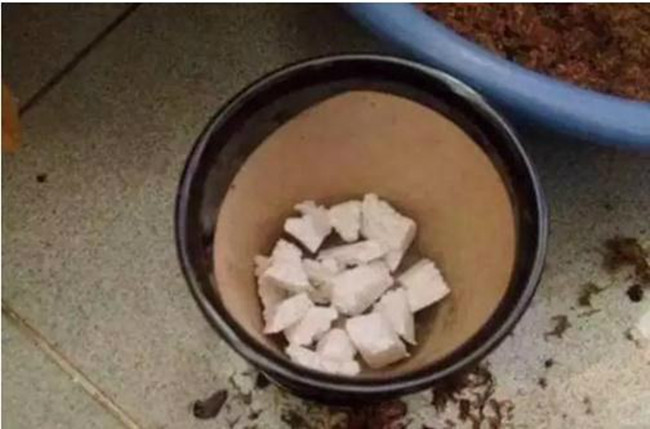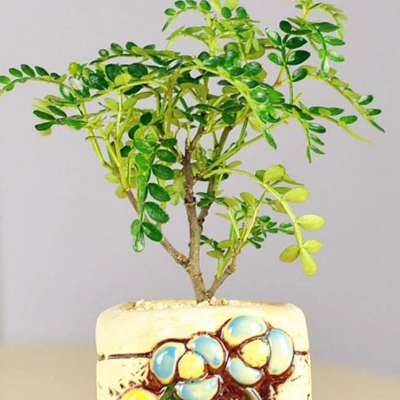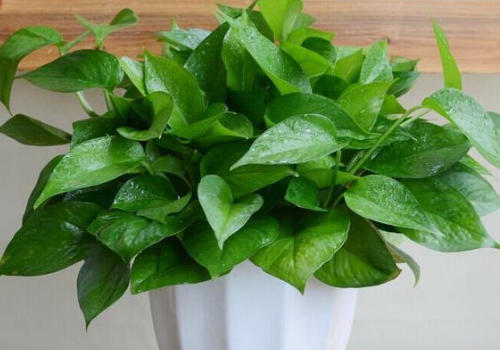Can I use foam at the bottom of the green turnip pad? the root is strong and the pot is not rotten.
Green pineapple, which is available in many people's homes, is super easy to breed and is generally hydroponic, so can you use foam at the bottom of the green turnip pad?
Usually when we buy household appliances, a lot of foam pad inside, will be a large piece of foam cut into small pieces with scissors, to green turnip pad in the bottom of the basin, green apple cold winter is not afraid of freezing.

Use foam to pad the bottom of the green turnip, permeable and breathable, but the foam has no fat. Therefore, flower friends need to use organic nutrient solution to irrigate green pineapple, 500 times water, once a week, green turnip roots absorb well, suddenly grow long strips.
At this time, change the pot and soil for the green pineapple, add some small pieces of foam, put in no more than 1 big 5 flowerpots, and then cover the soil. It's nice to break the foam block to the green apple for ventilation.
In addition, there is another advantage of using foam to pad the bottom of the green apple basin: the foam is very light, and the cushion at the bottom of the basin is light and breathable, and it can also improve the drainage and permeability of the soil in the basin, and the green radish is not easy to rot; as long as the maintenance ensures that the water and fertilizer is sufficient, the green radish root will burst the basin, and it will be easy to grow up.
In order to ensure sufficient water and fertilizer of green pineapple, we can use organic nutrient solution fermented by pure plants and fermented with sugarcane stalk. Like the principle of fermented leaves and straw in rural areas, it is rich in nitrogen, phosphorus and potassium.
In winter, green pineapple should be safe through the winter, the indoor temperature should be above 10 ℃, and the temperature difference between day and night should not be too large. The pot bottom of green turnip with foam pad can keep warm, even if the temperature continues to drop in winter, it can protect the root system of green turnip from frostbite.
Also, the foam is very easy to find. If you don't have it at home, take a stroll around, pick up some and use it for the green pineapple. This winter, you are not afraid that your beloved green pineapple will be frostbitten.
Green pineapple can be at the bottom with foam, doesn't it feel very practical?
Potted plants have rotten roots, and it is important to mix soil and change pots.
Sometimes the rotten roots of plants can not only be blamed for watering too frequently, sometimes the same plants, but with different soils, the frequency of watering should also be changed. if green pineapple is planted on sandy soil, it can be watered once every 3 days, and if it is planted on practical garden soil, it will take 5 to 7 days to water.
Soil requirements of potted plants
1. Hanging orchid
Chlorophyllum is a plant that can endure drought and waterlogging, but it can not stand long-term stagnant water in basin soil, so the soil with orchid must be loose, breathable and well drained, and ensure that the soil is slightly moist and not stagnant in a warm environment. If the soil is hardened, it needs to loosen the soil or change the basin in time, it is not very picky about the soil, and it can grow well with ordinary garden soil with river sand.
Like the pot below, if the pot is not changed in time, it will have no place to grow and it is easy to accumulate water and rot its roots.
Huahua suggests laying broken tiles, stones, cinders and other large particles at the bottom of the flowerpot.
It is covered with a layer of river sand, and it can be used at the construction site.
The top layer is covered with nutritious soil. Nutrient soil can choose humus soil, or a mixture of humus soil and peat soil.
2. Fortune tree
The rich tree is a plant that is relatively easy to maintain, the key is to pay attention to less watering, keep the light bright, the environment is ventilated, the basin soil does not accumulate water, too much watering will rot the root, and the stem will not be saved when the stem becomes soft.
Potted wealth trees like the following are the most common. Grass covered with a layer of plastic on the soil is actually not conducive to plant growth. You don't know whether the soil is dry or not. It is impractical to keep the soil slightly dry in winter.
With soil, you can directly use rotten leaf soil + garden soil and river sand, with a proportion of 5:3:2, you can put broken tiles on the bottom of the basin, and cover it with some ceramsite, the decorative effect is not bad.
3. Gentleman's orchid
The rhizome of the orchid, as shown in the following picture, is an expanded fleshy root, which is easy to rot if it is watered too much. In winter, the soil should be kept slightly dry, and the basin soil should be dried and then watered.
If you want the orchid to grow well, it is best to use rotten leaf soil with river sand, which can be mixed with some sawdust, the ratio is rotten leaf soil + river sand at 7:3, broken tiles on the basin bottom cushion, you can give a little rotten cake fertilizer as base fertilizer under the basin soil, so that the gentleman orchid can grow flowers and leaves brightly.
4. Orchids
Orchids like loose, well-ventilated and well-drained soil. In addition to choosing a more breathable tile basin, orchids also need to choose soils with loose soil and rich humus.
You can see that the orchid below grows well, in addition to mixing some gravel in the soil, but also on the basin bottom with some broken plastic foam, drainage and air permeability is very good, but its water retention is relatively poor.
Using plastic foam instead of broken tiles is a new technique, but the effect is quite good, but also to ensure that the orchid is not so easy to rot.
5. Succulent
When many friends first started to raise succulent plants, they thought that they should be watered as soon as they were planted. This is a complete mistake. The leaves of succulent plants are covered with water, especially the succulent plants that have just been bought online (no online shopping in areas below 0 degrees in winter). The roots have withered, and at this time you need to cut off the withered roots and hang them in the shade and ventilation for 1 day or 2 days. Add a little damp soil (peat + perlite mixed at 1:1) to the basin, then wait until the soil is completely dry before watering.
The soil can be covered with some volcanic stones or other granular stones, and some older succulent plants can be mixed with some granular stones (including red jade soil, deer marsh soil, river sand, Maifan stone, etc.). Before medium cultivation, you can soak it in carbendazim solution first.
Make sure that your succulent plants will grow well in the future, and that there will be few diseases and insect pests.
What about the rotten roots of potted plants? how to prevent and cure the rotten roots of potted plants?
Sometimes the rotten roots of potted plants can not be blamed for watering too frequently, sometimes the same plants are watered too frequently, but the frequency of watering varies with different soils. if green apples are planted on sandy soil, they can be watered once every 3 days, and if they are planted on practical garden soil, it will take 5 to 7 days to water them.
Soil requirements of different plants
1. Rotten roots of potted plants: Cymbidium
Chlorophyllum is a plant that can endure drought and waterlogging, but it can not stand long-term stagnant water in basin soil, so the soil with orchid must be loose, breathable and well drained, and ensure that the soil is slightly moist and not stagnant in a warm environment. If the soil is hardened, it needs to loosen the soil or change the basin in time, it is not very picky about the soil, and it can grow well with ordinary garden soil with river sand.
Like the pot below, if the pot is not changed in time, it will have no place to grow and it is easy to accumulate water and rot its roots.
It is suggested that the bottom of the flowerpot be covered with broken tiles, stones, cinders and other large particles.
It is covered with a layer of river sand, and it can be used at the construction site. The top layer is covered with nutritious soil. Nutrient soil can choose humus soil, or a mixture of humus soil and peat soil.
2. Rotten roots of potted plants: rich trees
The rich tree is a plant that is relatively easy to maintain, the key is to pay attention to less watering, keep the light bright, the environment is ventilated, the basin soil does not accumulate water, too much watering will rot the root, and the stem will not be saved when the stem becomes soft.
Potted wealth trees like the following are the most common. Grass covered with a layer of plastic on the soil is actually not conducive to plant growth. You don't know whether the soil is dry or not. It is impractical to keep the soil slightly dry in winter.
Soil: you can directly use rotten leaf soil + garden soil and river sand, with a proportion of 5:3:2, you can put broken tiles on the bottom of the basin, covered with some ceramsite, the decorative effect is not bad.
3. Rotting roots of potted plants: Magnolia
The rhizome of the orchid, as shown in the following picture, is an expanded fleshy root, which is easy to rot if it is watered too much. In winter, the soil should be kept slightly dry, and the basin soil should be dried and then watered.
If you want the orchid to grow well, it is best to use rotten leaf soil with river sand, which can be mixed with some sawdust, the ratio is rotten leaf soil + river sand at 7:3, broken tiles on the basin bottom cushion, you can give a little rotten cake fertilizer as base fertilizer under the basin soil, so that the gentleman orchid can grow flowers and leaves brightly.
Rotten roots of potted plants: 4. Orchids
Orchids like loose, well-ventilated and well-drained soil. In addition to choosing a more breathable tile basin, orchids also need to choose soils with loose soil and rich humus.
You can see that the orchid below grows well, in addition to mixing some gravel in the soil, but also on the basin bottom with some broken plastic foam, drainage and air permeability is very good, but its water retention is relatively poor.
Using plastic foam instead of broken tiles is a new technique, but the effect is quite good, but also to ensure that the orchid is not so easy to rot.
5. Rotten roots of potted plants: succulent plants
When many friends first started to raise succulent plants, they thought that they should be watered as soon as they were planted. This is a complete mistake. The leaves of succulent plants are covered with water, especially the succulent plants that have just been bought online (no online shopping in areas below 0 degrees in winter). The roots have withered, and at this time you need to cut off the withered roots and hang them in the shade and ventilation for 1 day or 2 days. Add a little damp soil (peat + perlite mixed at 1:1) to the basin, then wait until the soil is completely dry before watering.
The soil can be covered with some volcanic stones or other granular stones, and some older succulent plants can be mixed with some granular stones (including red jade soil, deer marsh soil, river sand, Maifan stone, etc.). Before medium cultivation, you can soak it in carbendazim solution first. Make sure that your succulent plants will grow well in the future, and that there will be few diseases and insect pests.
- Prev

Can fragrant wood really drive mosquitoes? what if the leaves turn yellow?
Fragrant wood is a kind of plant with strong pepper flavor, and it is a good ornamental plant, so can fragrant wood really drive mosquitoes? What if the leaves of fragrant wood turn yellow? Can fragrant wood really repel mosquitoes: the whole plant has a strong pepper flavor, purifies the air and repels mosquitoes and flies.
- Next

When is the best time for green pineapple cuttings to take root in a few days
Green pineapple can be transplanted, and its viability is very strong. It can be managed several times a week. When is the best time for green pineapple to be cut? How long does the cuttings take root? When is the best time for green pineapple cutting: 1. Green pineapple grows luxuriantly in spring and summer. If you need to cut new branches, you only need to cut the branches with air roots.
Related
- Fuxing push coffee new agricultural production and marketing class: lack of small-scale processing plants
- Jujube rice field leisure farm deep ploughing Yilan for five years to create a space for organic food and play
- Nongyu Farm-A trial of organic papaya for brave women with advanced technology
- Four points for attention in the prevention and control of diseases and insect pests of edible fungi
- How to add nutrient solution to Edible Fungi
- Is there any good way to control edible fungus mites?
- Open Inoculation Technology of Edible Fungi
- Is there any clever way to use fertilizer for edible fungus in winter?
- What agents are used to kill the pathogens of edible fungi in the mushroom shed?
- Rapid drying of Edible Fungi

